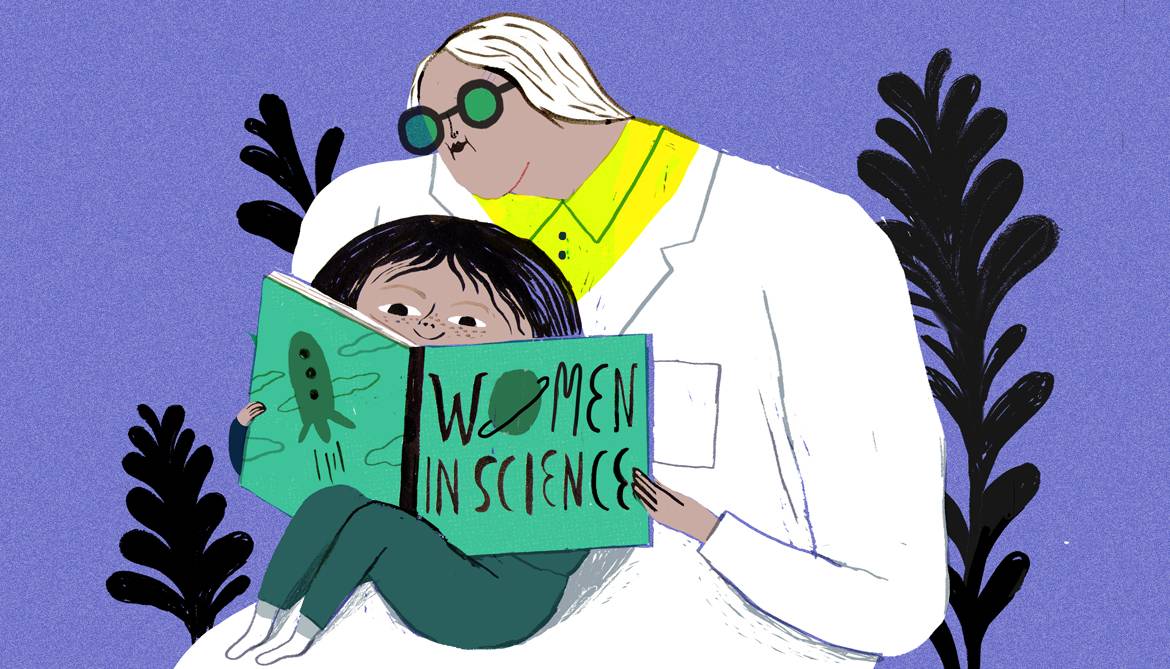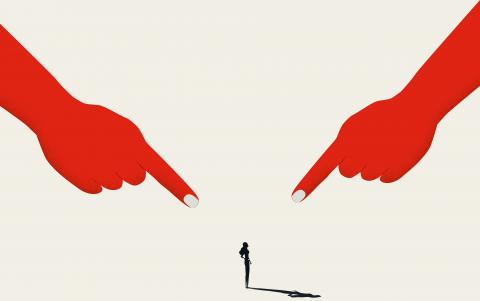On the gender gap in science
Girls'education
The gender gap in science exists and social scientists are trying to understand its causes, from childhood onwards. Many studies analyse gender stereotypes and biases, as well as differences in socialisation between boys and girls. These condition our behaviours and are related to the lower participation of girls and women in some STEM (science, technology, engineering and mathematics) fields.
“Girls are often brought up to believe that STEM are ‘masculine’ topics and that female ability in this field is innately inferior to that of males. This can undermine girls’ confidence, interest and willingness to engage in STEM subjects,” warns the 2017 UNESCO report Cracking the code: girls' and women's education in science, technology, engineering and mathematics (STEM).
Evidence reveals that these attitudes are strongly influenced by the family environment and the broader social context; and that the portrayal of women in the media also plays a role, the report says.
For example, from the age of six, the proportion of girls who consider people of their own gender to be "very, very smart" drops, and this doesn’t happen for boys, according to psychology studies of 400 children in the US, published in Science in 2017. This perception affects their interests: at the same age, girls tend to avoid games presented as activities for very smart people.
What girls and boys choose
When they make academic decisions, today’s teenagers tend to maintain the same patterns as the previous generations: a ‘segregated model’ in which boys “invent and calculate, and [girls] care for others".
This is one of the insights of the 2022 report Radiografía de la brecha de género en la formación STEAM [in Spanish], which gathers and analyses data on the school performance and choices of male and female students in Spain. This report makes for essential reading when it comes to covering the academic pathways of boys and girls in the country.
"We must therefore deconstruct gender roles that do not respond to the world we live in today, and relearn what it means to be a man and a woman in our society. This will make it easier for our youth, boys and girls, men and women, to choose educational and professional paths free of prejudice, stereotypes and social conditioning," urges the report.
What happens at university
Women make up the majority of university students in Spain (56% of the total in 2019-2020), but this proportion varies greatly depending on the field: from 25% in engineering and architecture to about 70% in health sciences, according to the report Científicas en cifras 2021 [summary available in English] by the Women and Science Unit of the Spanish Ministry of Science and Innovation.
Why is the proportion of female students in certain fields much lower than in others? Many researchers are trying to answer this question, and it has multiple answers. According to a study published in Science in 2015, based on a nationwide survey of academics in the US, in order to succeed in certain disciplines associated with brilliance—such as physics or mathematics—innate talent or genius is considered necessary, a perception that may "discourage participation among members of groups that are currently stereotyped as not having this sort of brilliance.”
A career of obstacles
-
The proportion of women in research staff in Spain has risen to 41% in 2021, compared to 34% in the EU-28. But the glass ceiling persists: the further along their research career, the smaller the proportion of women. In the country's 80 universities (public and private), women rectors and directors of university institutes account for 23% of the total. In this graph, known as the "scissors graph" because of its shape, grade A is the highest rank of research employment.
-
The proportion of women who enter scientific careers matters; so do their experiences and the barriers they encounter at work: they receive fewer awards [article in Spanish], their contribution is not credited as much as that of their male peers in scientific publications, and they suffer more harassment at work.
-
In Spain, the gap in obtaining funding for research projects remains wider than the European average: about a 6-point difference in success rates in favour of men (2019), compared to a 4-point difference in Europe as a whole (2018). (These are figures from the She-Figures 2021 report published by the European Commission; this PDF focuses on Spain.)
-
Having children affects academic women more negatively than it does men. In Spain in 2011, a man with children was four times more likely to be promoted to professor than a woman with children of similar characteristics, according to the Libro Blanco de la Situación de las Mujeres en la Ciencia Española [report in Spanish], 2011.
-
The pandemic has exacerbated gender inequality in the research community, as shown by several studies carried out since the 2020 lockdown. "Although both men and women have been affected by the crisis and have increased their dedication to household tasks, it is women – students, teachers and administrative staff – who have taken on most of the housework and care for dependents," says journalist Cristina Sáez in this 2020 article [in Spanish], which gathers the evidence from several studies and surveys.
-
To tackle this situation, research centres and universities are testing strategies to close the gender gap in science, Sáez writes in this other piece from 2021 [in Spanish].
-
More international data: this short PDF from the UNESCO Institute for Statistics compiles data on women in science in 2019. It includes percentages of women scientists in different countries in Africa, the Americas, Asia-Pacific and Europe.
On media representation
Figures: women scientists in the press
According to a 2018 study [article in Spanish] by the Universidad Rey Juan Carlos, the Spanish press only quoted female scientists on one in four occasions.
The Global Media Monitoring 2020 project offers more recent and global data. This study analyses the representation of women and men in the media worldwide, and is carried out every five years. It provides data on the presence of women in the media by topic, as news subjects and as sources of information. Here are selected findings.
In Spain, women are most frequently cited as sources of information to share their personal experience (50 %) or popular opinion (50 %).
But between the last two editions of the survey, there has been a notable increase in the proportion of women quoted by Spanish media outlets as experts: from 9 % in 2015 to 34 % in 2020. They appear as experts as medical doctors (23 %), care and education professionals (17 %) and scientists and academics (13 %).
In terms of subject areas, women in Spain are most cited in the Gender sections of media outlets, and make up 38 % in the Science and health section, as well as in Celebrities, culture and sports.
On this website you can read more highlights from the Global Media Monitoring Project 2020; here is the report for Spain.
In practice
The number of women scientists in the media matters; so does the way they are covered and cited. For example, we may tend to call women scientists and other professionals by their first name, not their surname, and this influences the prestige we associate with them.
In 2013, US science journalist Christie Aschwanden proposed a checklist that questions stereotypes in the press coverage of women researchers (especially in profiles published by mainstream newspapers). In her Finkbeiner test, Aschwanden recommends that articles about a female scientist should NOT mention:
-
The fact that she’s a woman
-
Her husband’s job
-
Her childcare arrangements
-
How she nurtures her underlings
-
How she was taken aback by the competitiveness in her field
-
How she’s such a role model for other women
-
How she’s the “first woman to…”
Others argue that we should ask male scientists more personal questions, not necessarily avoid personal questions when interviewing women scientists. These items are not commandments, but can serve as starting point to think about the perpetuation of gender stereotypes by the media.
Where to find women researchers as expert sources
-
Database of Spain’s Association of Women Researchers and Technologists (AMIT).
-
Buscador Agenda d'Expertes, a project of the Unió de Periodistes Valencians.
-
Database of Women Experts in Africa.
-
Search engine for expert sources on European affairs; includes women in academia and other sectors (in several languages and countries).
-
SheSource search engine of the Women's Media Centre (mostly in the USA).
-
Gage search engine of the 500 Women Scientists project.




